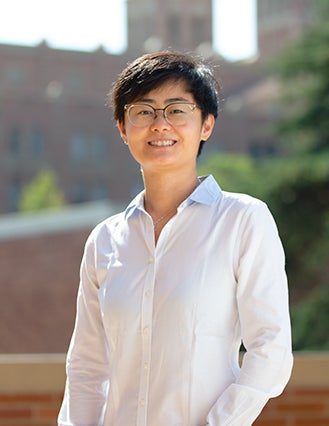“People often view microeconomics and macroeconomics separately,” says Assistant Professor of Finance Jinyuan Zhang. “However, some overlooked impacts of macro policies on individuals’ decision making can influence the economy profoundly.”
Zhang recently started teaching Trading, Market Frictions and FinTech in UCLA Anderson’s Master of Financial Engineering program. In spring 2022, she’ll slightly modify the curriculum and teach the same course in the full-time MBA program.
The course examines the financial market infrastructure and the mechanism of price formation and discovery. Through the lens of market frictions, students develop different perspectives on critical phenomena such as bubbles and crashes, short squeezes and mutual fund runs. The class also tackles new implications of these technological advancements in the stock market, high-frequency trading and alternative markets, including the bond and cryptocurrency markets.
The class is about trading associations in the financial market, essentially. You can’t assume that the market works just by magic. The prices are formed because people negotiate and trade in the market.
How this process works matters a lot. So this class starts by trying to understand what the key participants in the market are — the buyers and sellers, the middlemen; who are intermediaries, what are the government regulations.
And then we talk a lot about how information matters for people to trade in the market, and the fact that they’re the price formation in the market.
After that, we also talk about some sort of efficiency of the market: We have exchanges and we have typical buyer-seller customers, but also those who connect both parties. We talk about what trading is the “middle man.”
By the end of the course, I have three objectives for the students: That they gain an economic understanding of how the financial market functions, that they demonstrate presentation skills through an in-class group presentation and that that they are able to develop business ideas related to fintech.
Fintech is just using new technology and methodology to understand the data better and to provide financial services to the client.
I’ve written a paper on fintech, and I’ve published papers on intermediate financial structure. bring those into the class. The whole course is practical, so pretty much every class takes something from the news
I’m definitely asking the MFEs to do more intense programming assignments. I’m asking the MBAs to see fintech more in terms of cool business ideas.
I’m trying to reduce the workload for students. I want the class to be more practical. They aren’t just there to solve math programs and math assignments.
There are three assignments: a group presentation, a group business proposal that serves as a final, and an individual research paper summary. I also include class participation in the grading.
I had assumed that the students knew certain things already, and that wasn’t a very good assumption. So, I’d start off with some basics next time. After that, I’ll be able to expand on the material.
Next time I want to bring even more practical examples and assignments to the class because I think the students can learn more from doing than from listening.
